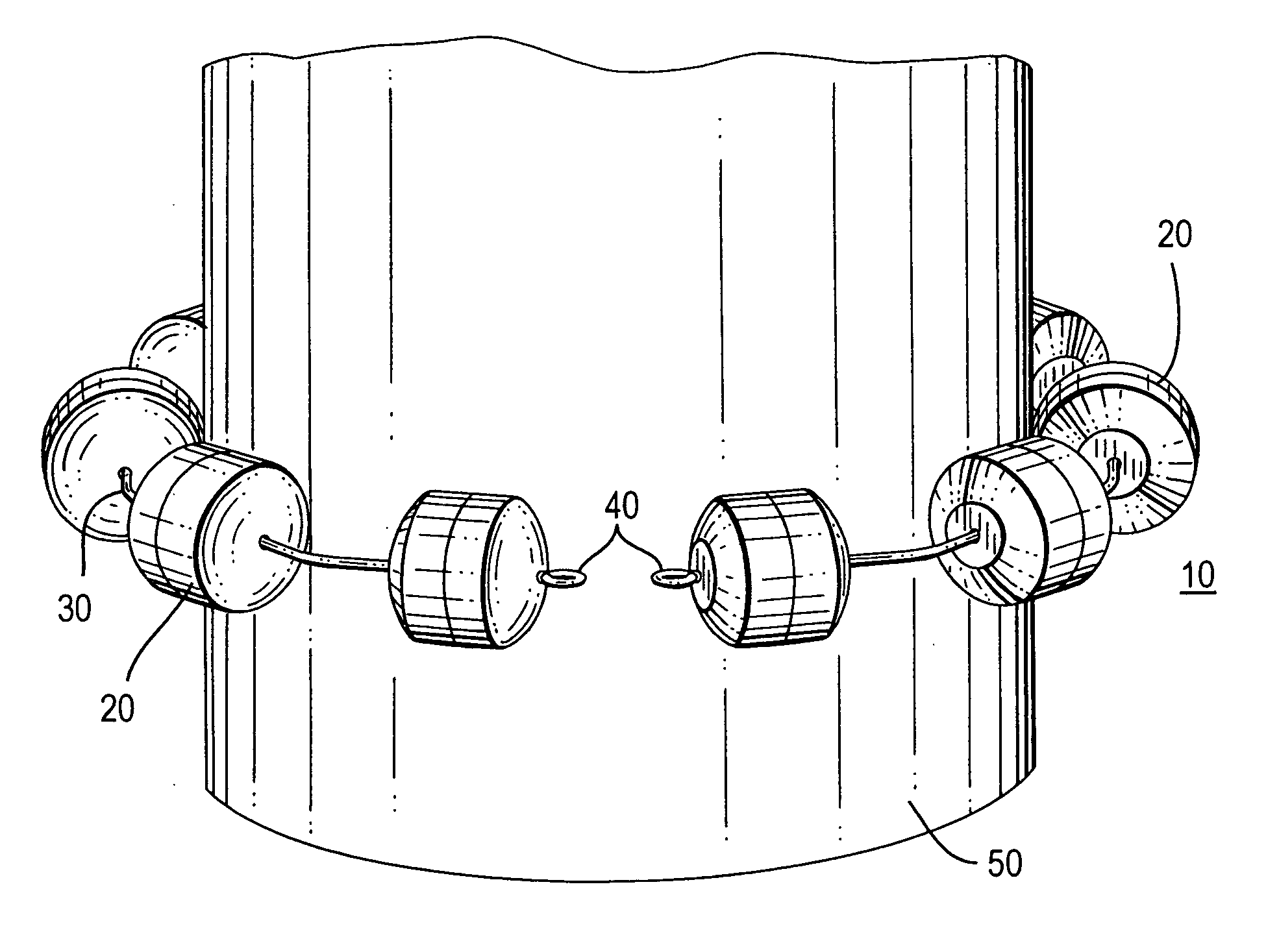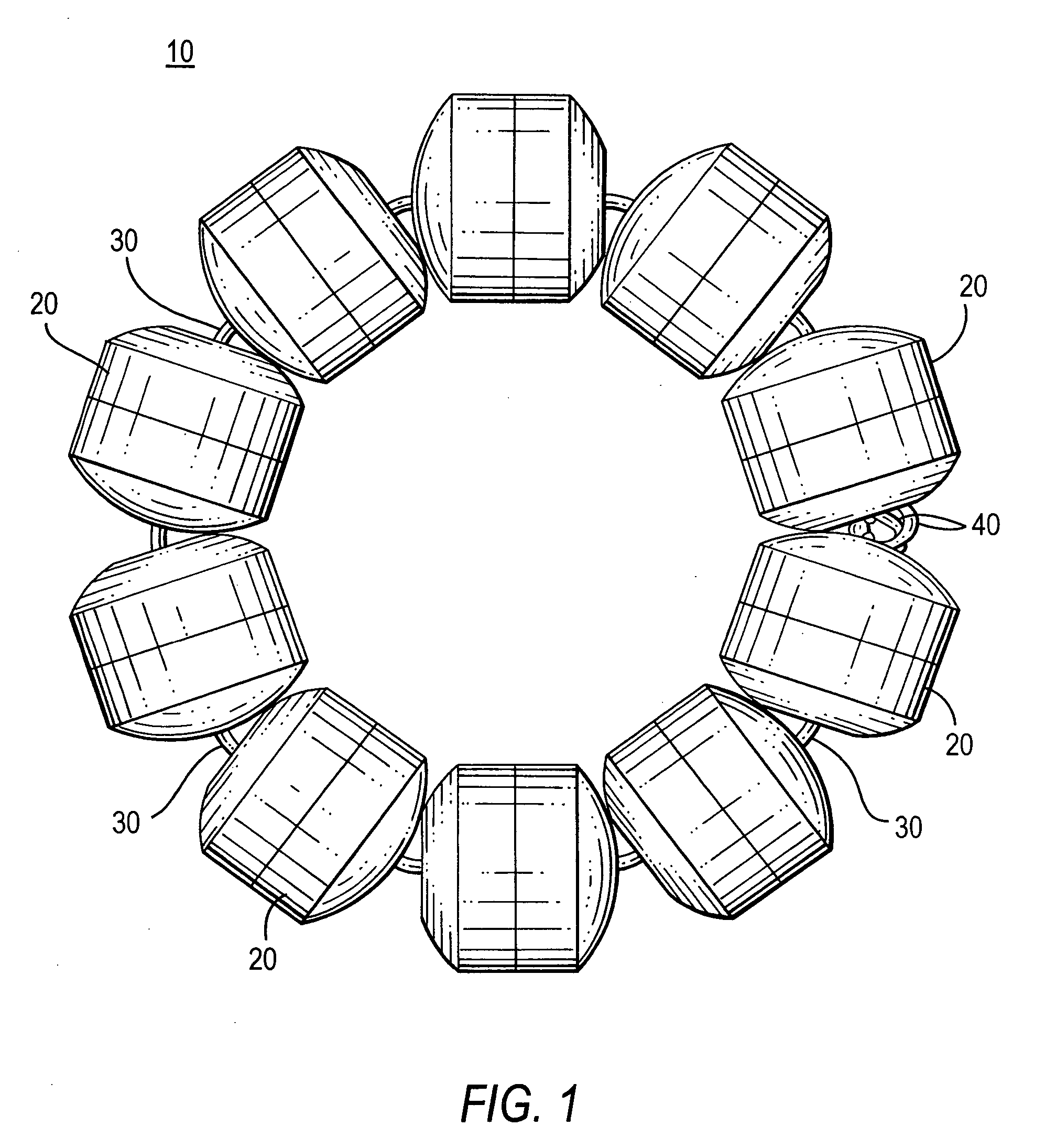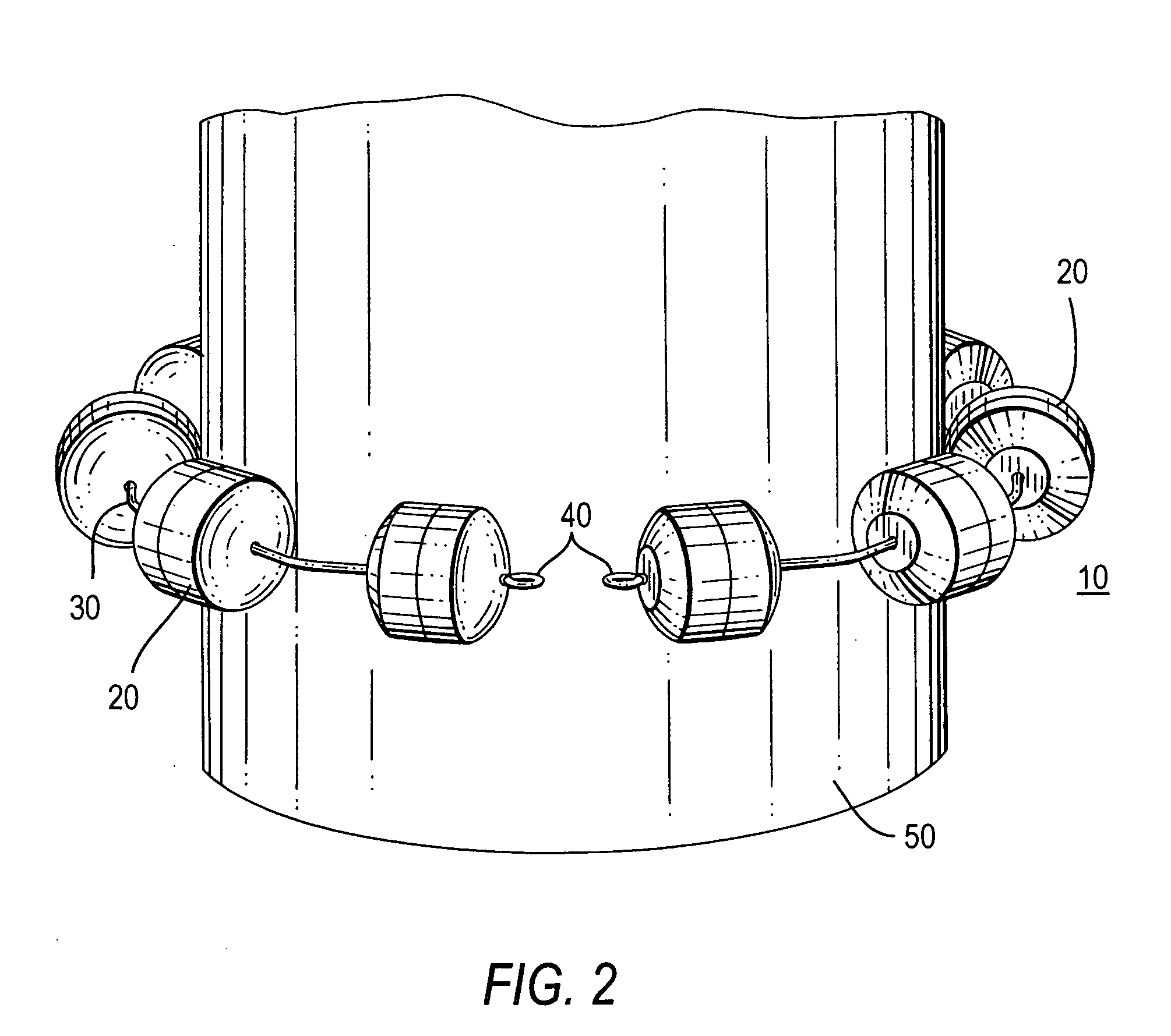Methods and apparatus for treating body tissue sphincters and the like
a sphincter and body tissue technology, applied in the field of medical implants, can solve the problems of limited contraction of the prosthesis, no tissue part is exposed to pressure of the kind that would be unhealthy for the tissue, etc., and achieve the effect of improving the tone of the sphincter and enlargement of the tissue structur
- Summary
- Abstract
- Description
- Claims
- Application Information
AI Technical Summary
Benefits of technology
Problems solved by technology
Method used
Image
Examples
Embodiment Construction
[0038] As shown in FIG. 1, an illustrative embodiment of apparatus 10 in accordance with the invention includes a plurality of substantially cylindrical bodies or “beads”20. Beads 20 can be formed into a closed loop with an open interior as shown in FIG. 1. Beads 20 are strung together by links 30. In general, each bead 20 has a link 30 to each of the immediately adjacent beads on each side of the first-mentioned bead. The possible exception to this is for the linkage between the two right-most beads in FIG. 1. Each of these beads has a link eyelet 40 extending outwardly from the bead toward the other of these beads. Link eyelets 40 may initially be separate from one another (e.g., as shown in FIG. 2 or FIG. 4). This allows apparatus 10 to (at least initially) not form a closed loop, which non-loop condition may be helpful in initially implanting the apparatus in a patient. If and when desired, link eyelets 40 may be connected to one another (e.g., by tying them together with a stra...
PUM
 Login to View More
Login to View More Abstract
Description
Claims
Application Information
 Login to View More
Login to View More - R&D
- Intellectual Property
- Life Sciences
- Materials
- Tech Scout
- Unparalleled Data Quality
- Higher Quality Content
- 60% Fewer Hallucinations
Browse by: Latest US Patents, China's latest patents, Technical Efficacy Thesaurus, Application Domain, Technology Topic, Popular Technical Reports.
© 2025 PatSnap. All rights reserved.Legal|Privacy policy|Modern Slavery Act Transparency Statement|Sitemap|About US| Contact US: help@patsnap.com



